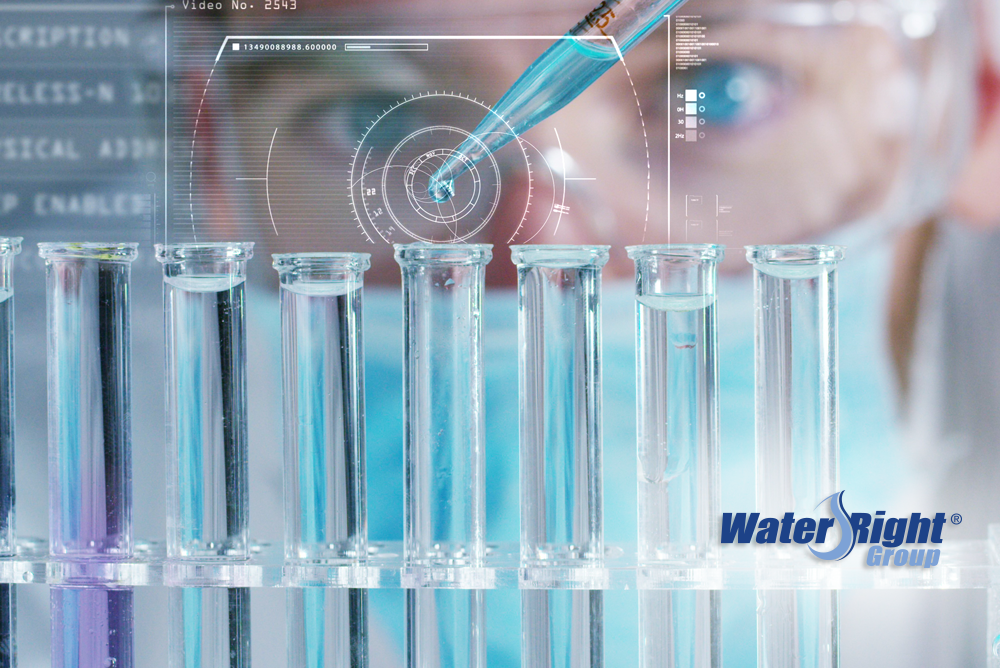
23 Common Water Contaminants and their Potential Risks
Whether you’re watching the local news or scrolling through a social media feed, you’re bound to run across headlines covering water quality concerns in cities around the country. So, how do you know if your home’s water poses any risks?
Living in the United States, we are extremely fortunate to have access to water that is generally safe to use and consume. Many of us may take the fact that we can get clean water from the kitchen sink for granted. There are parts of the world in which water is becoming increasingly scarce. Plus, the United Nations says one in nine people around the world uses water from unsafe sources while 2.4 billion have no form of sanitation.
Here in the U.S., the story of the water crisis involving lead contamination in Flint, Michigan, is well known, and similar situations continue to emerge. Recently, the city of Newark, New Jersey was handing out bottled water to residents because of lead contamination from aging water infrastructure.
Concerned homeowners may also hear about everything from fluoride and pharmaceuticals in city water to nitrates and bacteria in private wells.
State and local requirements as well as federal laws like the Safe Drinking Water Act are designed to protect the public from contaminated water that could be harmful. However, these laws still don’t guarantee standards are always being followed and enforced, and the scientific community is still learning about the effects of some contaminants.
Understanding Drinking Water Contaminants: Primary, Secondary, and Emerging
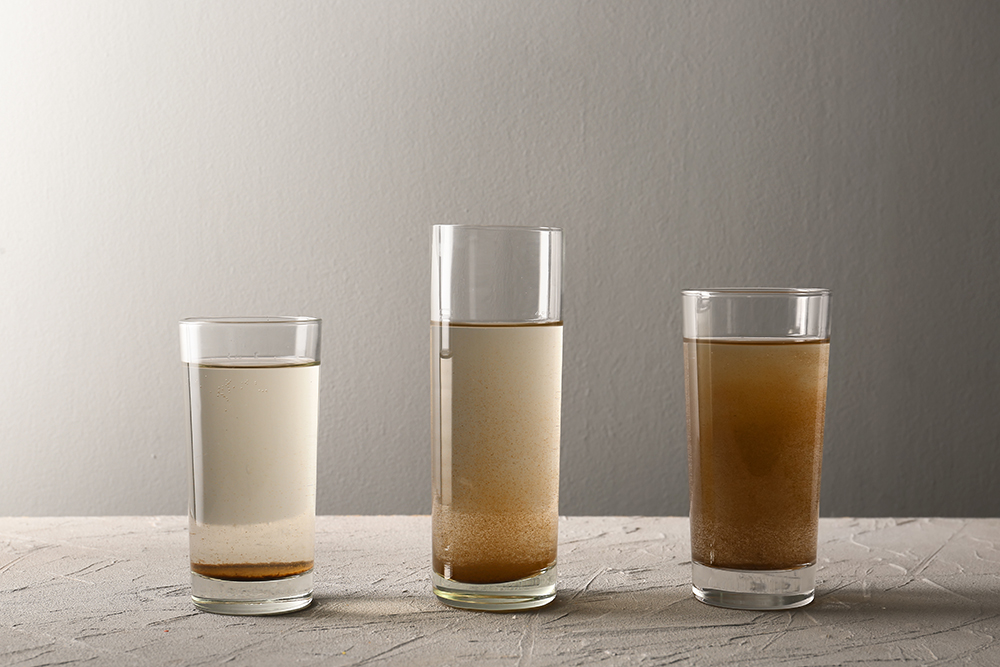
While the Environmental Protection Agency (EPA) lists more than 80 water contaminants that may pose a risk to human health, there are also contaminants that are not yet fully understood, and some that can cause problems in your home but aren’t considered harmful.
The EPA’s National Primary Drinking Water Regulations involve standards and treatment methods that are enforceable by law and intended to limit contaminant levels in water to protect public health.
There are also National Secondary Drinking Water Regulations, which involve additional contaminants that are not considered a health risk at certain levels. The EPA has non-mandatory guidelines for maximum levels of these contaminants. Municipalities test for them on a voluntary basis. Even though secondary contaminants aren’t considered dangerous, they can cause water quality problems. That includes aesthetic issue such as taste and odor, cosmetic issues such as discoloration and staining, or technical effects, including water contaminants that could damage appliances in your home.
Contaminants of emerging concern (CECs) include pharmaceuticals, personal care products, endocrine disruptors, and other compounds that could have a negative effect on the environment and/or public health. As the WQA explains, trace amounts of these substances are being found in water supplies around the country:
“With advances in testing and health research, experts are learning of new potential dangers in our drinking water. In many cases, the possible harms are not yet fully known.”
Below, you’ll find a list of common primary, secondary, and emerging drinking water contaminants.
Primary Water Contaminants
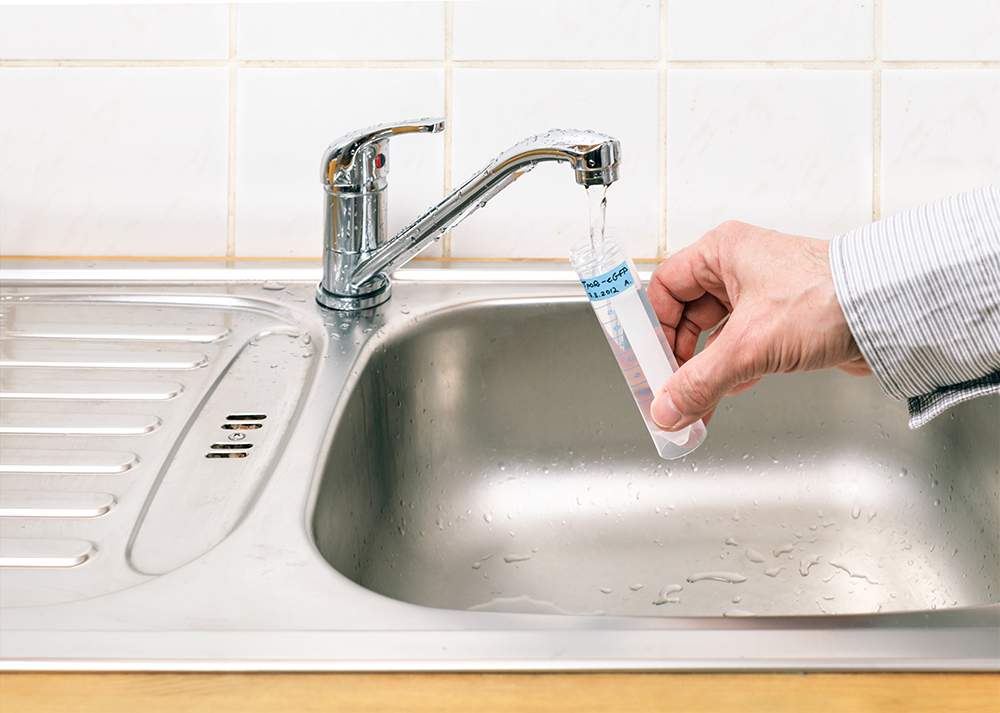
Microorganisms
1. Coliform bacteria: The most well-known type of coliform bacteria is E.coli. The EPA measures and regulates Total Coliforms in drinking water, which indicate potential for the presence of harmful bacteria that come from human and animal fecal waste.
2. Cryptosporidium and Giardia: These parasitic pathogens may also come from human and animal fecal waste and may produce gastrointestinal symptoms. These contaminants are among the most-common forms of waterborne illness and may be found in rivers and lakes as well as groundwater. Some have shown resistance to elimination using chlorine or boiling.
3. Legionella: This bacteria is the cause of the respiratory illness legionnaire’s disease, which prompts the hospitalization of thousands of U.S. residents every year. Legionella are found naturally in the environment and infect individuals who breathe in tiny droplets containing the contaminant. It can also cause flu-like symptoms known as Pontiac Fever.
4. Viruses: Inadequately treated water can also contain enteric viruses, which could include rotavirus, norovirus, hepatitis A and E, as well as others. Most of these viruses are commonly associated with gastroenteritis. U.S regulations call for 99.99% removal of enteric viruses by approved treatment techniques.
Treating Microorganisms in Drinking Water
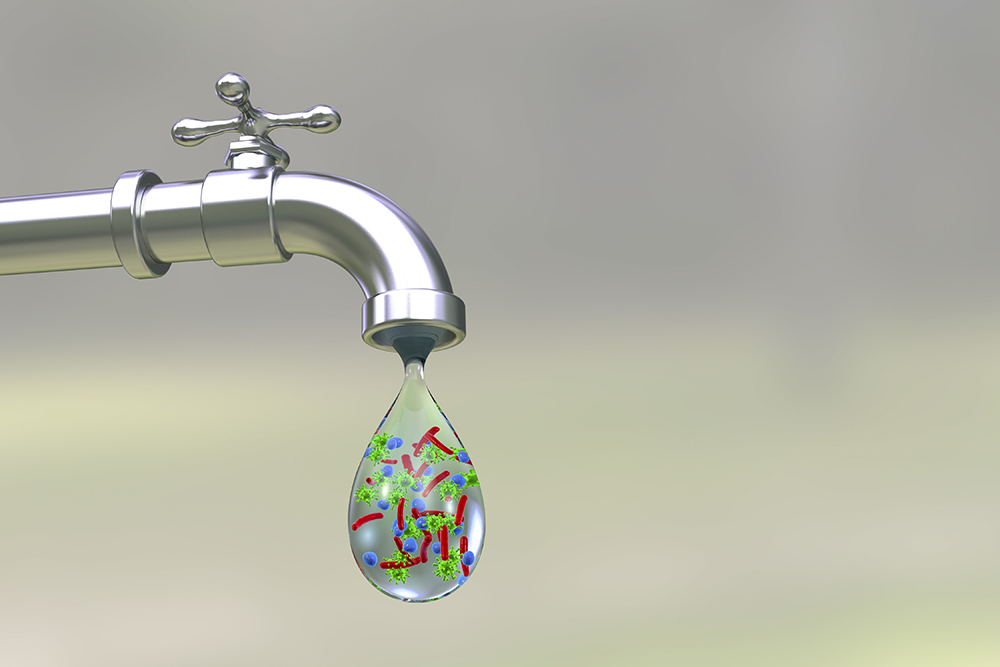
The WQA says that bacteria and viruses are the most likely contaminants to cause acute negative health effects. Because chlorination may not always be enough to eliminate these contaminants, UV treatment is another method commonly used to provide disinfection.
Inorganic Compounds
5. Arsenic: This element occurs naturally in rocks and soil, but it can also be an industrial waste byproduct, particularly from mining and coal burning. It can enter the groundwater from both natural deposits and pollution, so it could be an issue with well water. The EPA says studies link long-term exposure of arsenic to certain cancers as well as cardiovascular, neurological, and other conditions. Potentially unsafe levels of arsenic in bottled water made news in 2019.
6. Chromium: There are two types of chromium – trivalent and hexavalent. Trivalent (chromium-3) occurs naturally and is actually an essential nutrient. Hexavalent (chromium-6) occurs naturally in the environment but can also be a toxic industrial byproduct. The EPA regulates the total amount of both types of chromium, because they can convert back and forth in water. The EPA has proposed classifying chromium-6 as “likely carcinogenic to humans if ingested.”
7. Copper: Many residential plumbing systems include copper pipes. The metal can leach from the pipes into drinking water due to corrosion, especially if the water is highly acidic. Short-term exposure to elevated levels of copper in water may cause gastrointestinal issues. Long-term exposure could lead to liver and kidney problems.
8. Chlorine and Chloramine: These two substances are frequently used by municipalities to disinfect public water supplies, making water safe to consume. However, when chlorine and chloramine are present in excess of maximum levels, they can cause eye and nose irritation or stomach discomfort. These disinfectants are also responsible for drinking water that consumers often say “tastes like a swimming pool.” Because chloramine contains ammonia, consumers may notice that smell in municipal water.
9. Fluoride: Like chlorine, this inorganic chemical may also be added to the public drinking supply. Some municipalities add fluoride to promote dental health, but there is debate over whether fluoride is good or bad. It is also a naturally-occurring form of the element fluorine, which is sometimes found in groundwater at levels that exceed government recommendations – typically in the western U.S. and Great Lakes regions. Too much fluoride can cause pitting and staining of tooth enamel. Long-term exposure to high levels could lead to bone issues in adults.
10. Lead: Water contaminated with lead has received a significant amount of news coverage in recent years. Like copper, it can leach into the water supply from corrosion of metal pipes. The EPA says lead is a toxic chemical that can be harmful to human health at low levels. It is especially dangerous for children and babies, potentially causing serious development issues, from neurological damage to impaired formation of and function of blood cells. Find out more about lead in drinking water, including how to get your water tested.
11. Mercury: Inorganic mercury compounds form in the Earth’s crust as mercury combines with other elements. It can enter groundwater through erosion of natural deposits, but it may also be discharged from refineries and factories or come from landfill runoff. Exposure to mercury in drinking water over many years could cause kidney damage. The WQA says excessive mercury exposure could also have negative effects on brain function, vision, and hearing.
12. Nitrate/Nitrite: Contamination from nitrites and nitrates are a problem homeowners with wells may encounter. It could occur because of the fertilization of nearby farm fields or septic tanks located too close to the well. You may be familiar with nitrates and nitrites as plant food or a food additive. In most cases, these compounds aren’t a serious health risk. But, they are harmful to infants, causing what’s known as blue baby syndrome, which can be fatal. High levels of nitrate may also indicate pesticides and herbicides are entering the water supply. Water-Right’s Greg Gruett explained the impact of nitrates in depth for Water Well Journal.
Treating Inorganic Drinking Water Contaminants
For many of the inorganic compounds listed above, a reverse osmosis (R.O.) system is an ideal solution for addressing contamination concerns. R.O. systems are usually installed at the point-of-use, such as your kitchen sink. Carbon filtration and a special membrane are used to filter contaminants from water for drinking and cooking.
There are, however, other whole-home filtration solutions that can address contaminants. That includes systems equipped with Water-Right’s innovative ONE™ Filtration, which is a special cartridge that is certified to remove lead and other particulates. If you have corrosive water with high acidity, which may cause copper or lead to leach from plumbing, there are acid neutralizer filtration solutions that can balance your water’s pH levels.
It can be hard to tell if your home’s water is contaminated with inorganic compounds that pose a health risk. They are often colorless, odorless, and tasteless. That’s why it’s very important for homeowners with private wells to have their water tested every year. City residents can review their municipality’s Consumer Confidence Report for more information about water quality.
You can also contact a local water quality expert, such as our Evolve® and WaterCare® dealers, to find out more. They can conduct an analysis of your home’s water and have access to our state-certified Clean Water Testing laboratory to help identify the presence of many potentially harmful contaminants.
Organic Compounds
Volatile organic compounds (VOCs) and inorganic chemicals differ in that organic chemicals contain the element carbon. The EPA regulates 23 VOCs that can affect human health or the environment and may be carcinogenic or contribute to other health issues.
VOCs can occur naturally in the environment, but many are manmade (also known as Synthetic Organic Compounds or SOCs). They are often used in industrial or agricultural operations, which is how we’ve grouped them below.
13. Agricultural Chemicals: Drinking water may become contaminated with herbicides, insecticides, and pesticides used in agriculture. They include but are not limited to: alachlor, atrazine, dinoseb, endothall, endrin, glyphosate, lindane, picloram, oxamyl, and simazine. Other agricultural chemicals have already been banned or restricted due to health concerns.
14. Industrial Chemicals: Those with their own wells and communities located near industrial operations should consider the possibility of contamination from waste and runoff, especially if those facilities include chemical processing. Some of the industrial-use VOCs associated with water contamination include: carbon tetrachloride, chlorobenzene, different forms of dichloroethylene, ethylbenzene, polychlorinated biphenyls (PCBs), toluene, trichlorethylene, and more.
Treating Volatile Organic Compounds
VOCs in drinking water are commonly treated using activated carbon. A high-quality R.O. drinking water system is a good solution for removing organic chemicals because it includes carbon cartridges in addition to its membrane filter.
If your water has a sweet taste or a somewhat pleasant odor, that could be sign it contains organic compounds. The EPA recommends testing well water for VOCs every five years.
Secondary Water Contaminants
15. Aluminum: Because it is an abundant metal in the earth’s crust, aluminum may leach into groundwater. While there is a health risk for dialysis patients, the main issue that aluminum contamination causes a bluish discoloration.
16. Iron: This is one of the most-common well water contaminants. While it poses no health risk, iron can cause a variety of aesthetic issues, including orange stains, a metallic taste, and clogs caused by bacteria that feed on iron. Water with iron that is not dissolved may appear rusty. Learn more about different types of iron in water as well as how to deal with iron stains.
17. Manganese: Manganese is a mineral found in rocks and soil that is often found in water with high levels of iron. Water contaminated with manganese could have a brownish discoloration, produce black sediment, cause staining, and have a bitter taste or unpleasant odor.
18. Sulfur: Compounds containing sulfur can cause different aesthetic issues with water. For example, hydrogen sulfide is typically associated with water that has rotten egg smell. The displeasing odor actually comes from harmless bacteria that feed on the sulfur. High levels of sulfate may give water a salty taste. Hydrogen sulfide can also corrode metal, including pipes, fixtures, and utensils. High levels of sulfur or hydrogen sulfide could cause minor stomach issues.
19. Calcium and Magnesium (Hardness): The EPA classifies the minerals calcium and magnesium in the category of total dissolved solids (TDS). Water dissolves these minerals, increasing hardness and causing a host of aesthetic and technical issues in many homes. Hard water problems include soap scum and limescale buildup, increased wear on water-using appliances, ineffective cleaning and bathing products, and more. Hard water is the most common water quality issue, impacting 90 percent of U.S. homes.
Treating Secondary Water Contaminants
There are many ways to address water contaminants that cause aesthetic issues with household water. Some can even be purchased directly from home improvements stores, although, DIY water treatment may be a bad idea. Even a piece of equipment as basic as a water softener should be calibrated to effectively treat your home’s unique water quality issues.
A water softener can’t solve all your problems, either. For example, typical systems are unable to address high iron, balance pH levels, or completely remove odors from contaminants. Water softeners are specifically designed to remove hard minerals (calcium and magnesium) and produce soft water. Additional filtration is often required to get the kind of water quality you expect.
Local experts, such as our Evolve® and WaterCare® dealers, can evaluate your home’s water and use innovative water treatment equipment and special media to install a solution that’s right for you. Our dealers will provide products designed for city water and well water. Not only can these solutions improve water quality, water treatment equipment will save you money over time.
Emerging Contaminants
20. Manganese: While manganese is considered a secondary contaminant today, it can cause adverse health effects at high levels. Research shows overexposure could lead to nervous system and learning problems, impacting memory, attention, and motor skills among both adults and children. Excessive manganese in the groundwater supply has been observed in the Northeast U.S., and Iowa Public Radio reports that the DNR recently started testing for contamination in public water supplies.
21. Pharmaceuticals: Prescription drugs and over-the-counter medications enter the water supply when people flush unused or expired pharmaceuticals. Trace amounts of drugs, such as antibiotics, contraceptives, and antidepressants, are found in drinking water because conventional wastewater treatment plants are unable to completely remove them. While the level is much lower than the therapeutic dose a doctor would prescribe, the EPA is investigating due to public concern.
22. Personal Care Products (PCPs): There are also emerging concerns that certain bath and beauty products are contaminating drinking water. Antibiotic soaps, perfumed products, products containing microplastics, and other items go down the drain and trace amounts are found in surface water. These contaminants may be more of a concern for aquatic life than human health.
23. Per- and polyfluoroalkyl substances (PFAS): Among this group of emerging contaminants are PFOA and PFOS. They are man-made chemicals, which have been used for decades, but are receiving more attention lately. The EPA says PFAS may be found in food, packaging and household products such as cookware as well as contaminated soil and drinking water. The contaminants typically enter the water supplies of communities near industrial facilities producing the chemicals. There is evidence that PFAs can have adverse effects on human health. That includes the possibility of affecting immune systems, hormones, and infant health. PFOAs in particular could contribute to cancer.
Treating Emerging Contaminants
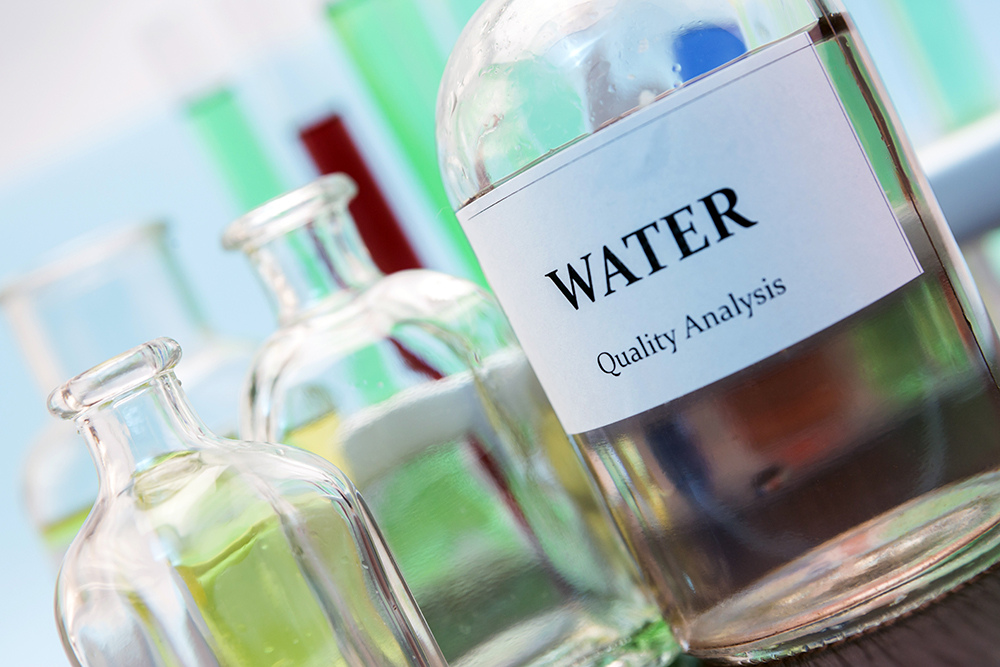
As knowledge surrounding the impact of CECs continues to expand, so do the potential solutions being developed to address them. Reverse osmosis, for example, has proven to be an effective method for removing pharmaceuticals from drinking water. And, Water-Right’s exclusive Crystal-Right® media has a large appetite for reducing manganese levels. PFOA and PFAS chemicals can be removed by our certified ONE™ filter.
For more complicated contaminants, leaders in water treatment are actively testing methods that will help ease public concern and address the safety of drinking water. The goal of everyone associated with the Water-Right family of brands is to provide homeowners with the right water for life.

